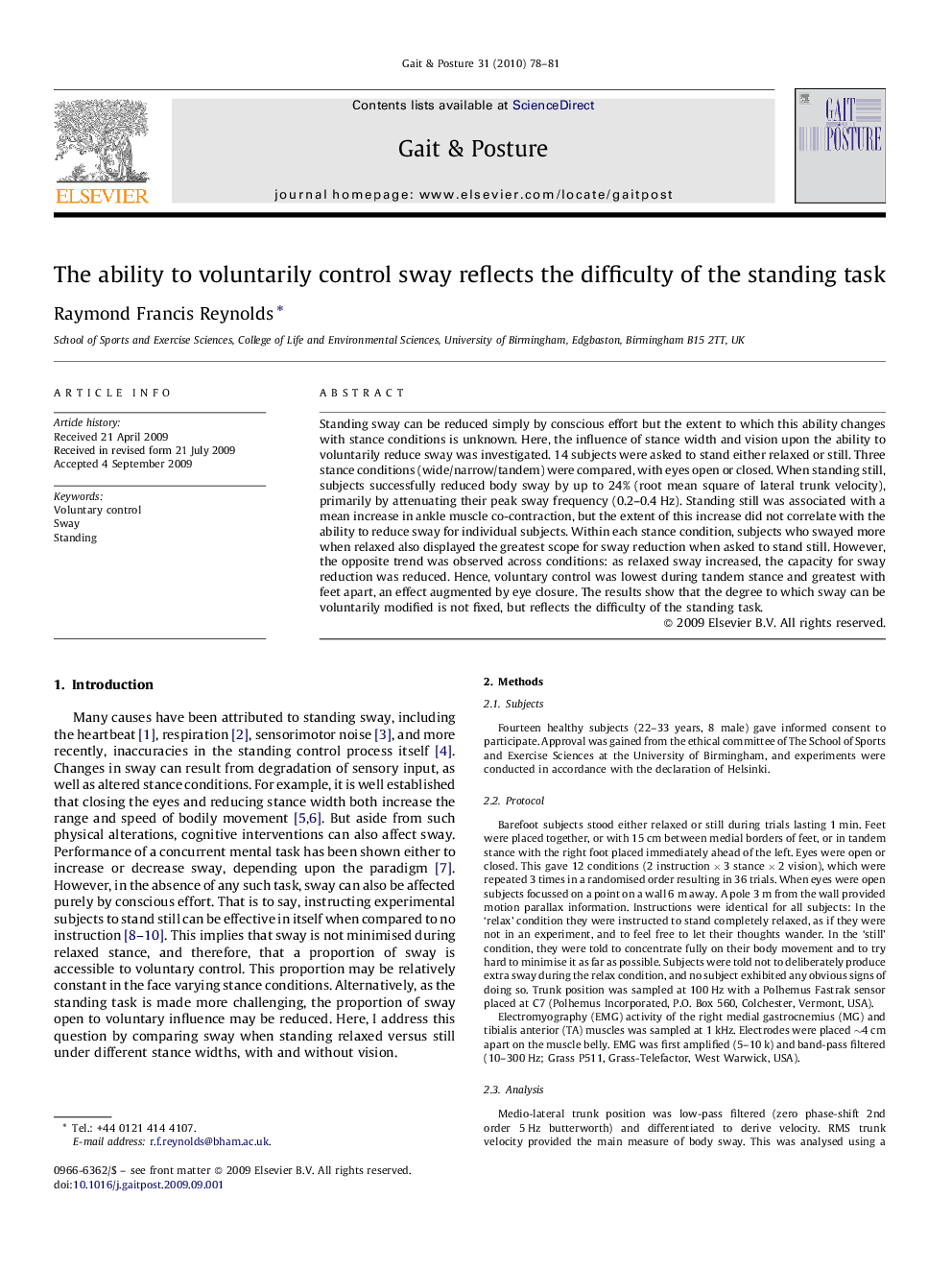| Article ID | Journal | Published Year | Pages | File Type |
|---|---|---|---|---|
| 4057204 | Gait & Posture | 2010 | 4 Pages |
Standing sway can be reduced simply by conscious effort but the extent to which this ability changes with stance conditions is unknown. Here, the influence of stance width and vision upon the ability to voluntarily reduce sway was investigated. 14 subjects were asked to stand either relaxed or still. Three stance conditions (wide/narrow/tandem) were compared, with eyes open or closed. When standing still, subjects successfully reduced body sway by up to 24% (root mean square of lateral trunk velocity), primarily by attenuating their peak sway frequency (0.2–0.4 Hz). Standing still was associated with a mean increase in ankle muscle co-contraction, but the extent of this increase did not correlate with the ability to reduce sway for individual subjects. Within each stance condition, subjects who swayed more when relaxed also displayed the greatest scope for sway reduction when asked to stand still. However, the opposite trend was observed across conditions: as relaxed sway increased, the capacity for sway reduction was reduced. Hence, voluntary control was lowest during tandem stance and greatest with feet apart, an effect augmented by eye closure. The results show that the degree to which sway can be voluntarily modified is not fixed, but reflects the difficulty of the standing task.
